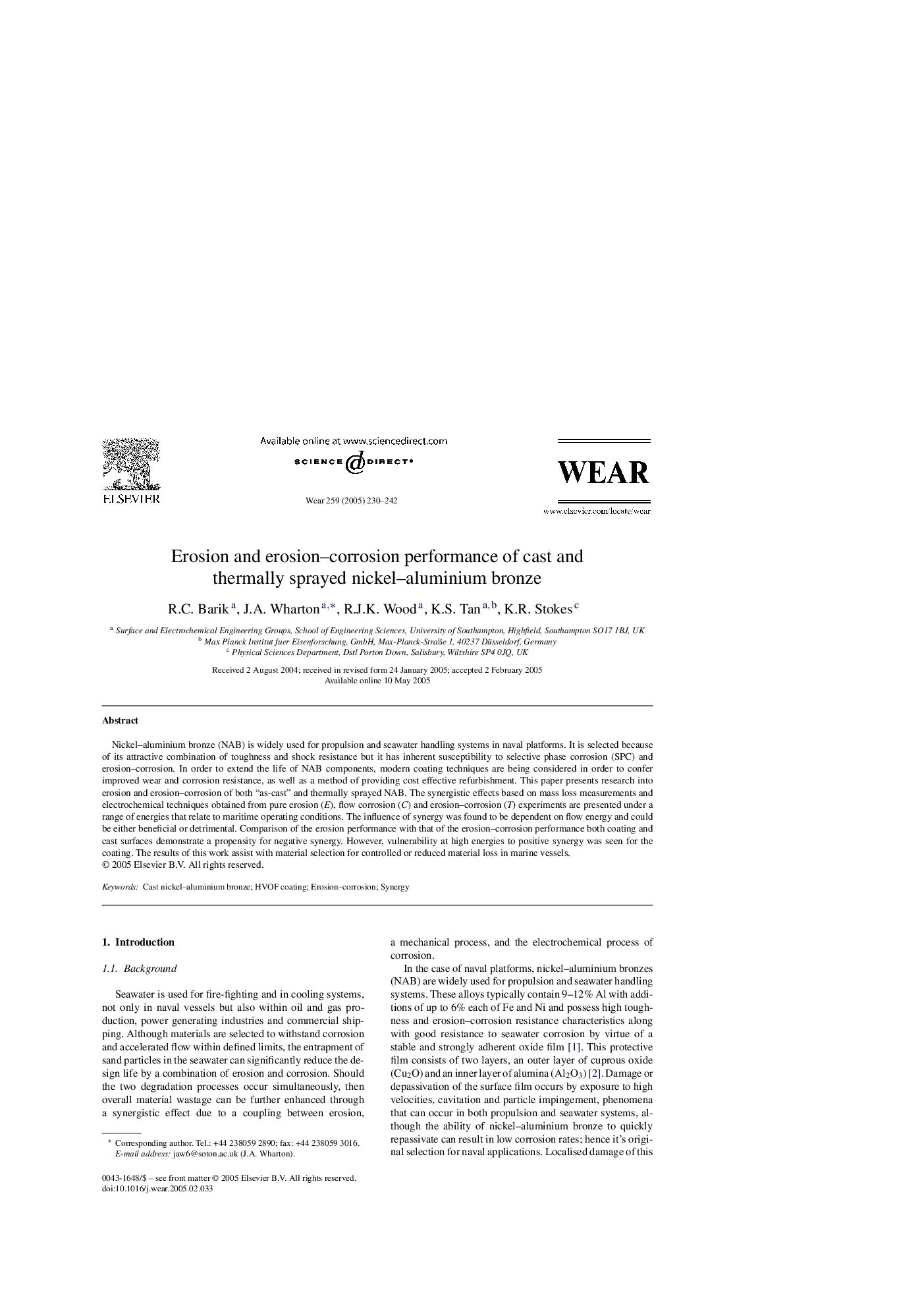| Article ID | Journal | Published Year | Pages | File Type |
|---|---|---|---|---|
| 9679413 | Wear | 2005 | 13 Pages |
Abstract
Nickel-aluminium bronze (NAB) is widely used for propulsion and seawater handling systems in naval platforms. It is selected because of its attractive combination of toughness and shock resistance but it has inherent susceptibility to selective phase corrosion (SPC) and erosion-corrosion. In order to extend the life of NAB components, modern coating techniques are being considered in order to confer improved wear and corrosion resistance, as well as a method of providing cost effective refurbishment. This paper presents research into erosion and erosion-corrosion of both “as-cast” and thermally sprayed NAB. The synergistic effects based on mass loss measurements and electrochemical techniques obtained from pure erosion (E), flow corrosion (C) and erosion-corrosion (T) experiments are presented under a range of energies that relate to maritime operating conditions. The influence of synergy was found to be dependent on flow energy and could be either beneficial or detrimental. Comparison of the erosion performance with that of the erosion-corrosion performance both coating and cast surfaces demonstrate a propensity for negative synergy. However, vulnerability at high energies to positive synergy was seen for the coating. The results of this work assist with material selection for controlled or reduced material loss in marine vessels.
Keywords
Related Topics
Physical Sciences and Engineering
Chemical Engineering
Colloid and Surface Chemistry
Authors
R.C. Barik, J.A. Wharton, R.J.K. Wood, K.S. Tan, K.R. Stokes,
